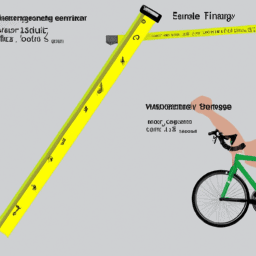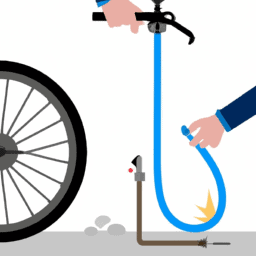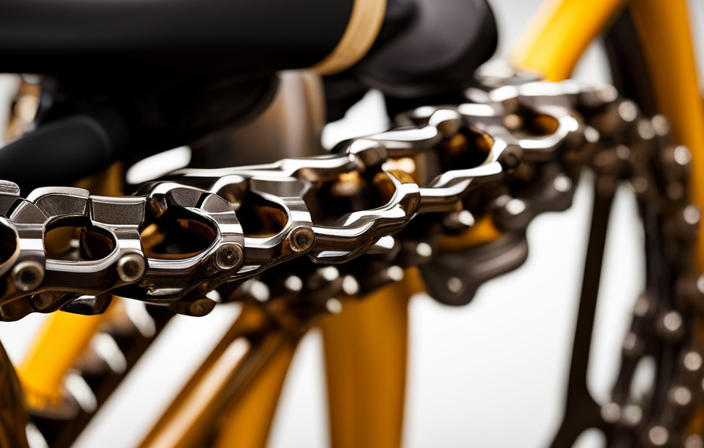Cycling gives you the sensation of soaring on a pair of wheels. Feeling the breeze through your hair, experiencing the liberty it brings, and embarking on adventures are integral elements of this activity. Nevertheless, much like any voyage, ensuring you’re equipped with the proper gear is crucial.
As a six-foot-tall man, finding the perfect size bicycle can be a daunting task. But fear not, with a little knowledge and guidance, you’ll be soaring down the road in no time.
The first step in finding the right size bicycle is to measure your inseam. This measurement will give you an idea of how much legroom you need on the bike.
Next, you’ll want to consider the type of bike you want. There are many different styles, from road bikes to mountain bikes to hybrids, and each has its own unique features.
Once you’ve narrowed down your options, it’s important to check the bike’s standover height, which is the distance between the ground and the top tube of the bike frame.
Finally, take the bike for a test ride and get a professional fitting to ensure a comfortable and safe ride. With these tips in mind, you’ll be ready to take off on your bicycle adventure.
Key Takeaways
- Measuring inseam is the first step in finding the right size bicycle.
- Standover height clearance should be at least one inch between crotch and top tube for safety and comfort while riding.
- Testing the bike is crucial to determine if it suits your needs and provides the comfort level you desire.
- Professional fitting is one of the most important things you can do to ensure that your bike is comfortable and efficient.
Measure Your Inseam
You’ll need to measure your inseam to determine the appropriate bicycle size for your 6-foot frame, so grab a tape measure and follow these steps.
Start by choosing pants that fit well and aren’t too tight. Stand with your feet shoulder-width apart and your back against a wall. Take the tape measure and place it between your legs, pressing it up against your crotch.
Measure from the floor to the top of the tape measure. This measurement is your inseam.
When finding shoes to wear for the measurement, make sure they have a similar sole to the shoes you plan to wear while cycling. This’ll give you a more accurate measurement.
Once you have your inseam measurement, refer to a sizing chart for the specific type of bike you plan to purchase. Keep in mind that different types of bikes may have different size recommendations.
With this information, you’ll be able to determine the appropriate bike size for your 6-foot frame, ensuring a comfortable ride.
Consider the Type of Bike
If you’re planning on riding on rough terrains, then a mountain bike with a sturdy frame and thick tires would be a good choice.
Mountain bikes are designed for off-road riding and are equipped with features such as suspension systems and durable components that can withstand the rigors of uneven terrain.
On the other hand, if you’re mostly going to ride on paved roads or bike paths, then a road bike with a lightweight frame and narrow tires would be more suitable.
Road bikes are built for speed and efficiency on smooth surfaces and are ideal for long distance rides.
When choosing a bike, it’s important to consider your budget and the type of riding you’ll be doing.
Hybrid bikes are a popular choice for those who want a mix of comfort and versatility.
They combine features of both mountain and road bikes and are suitable for a variety of terrains.
Cruiser bikes, on the other hand, are designed for casual, leisurely rides and have a more relaxed riding position.
It’s also important to make sure you get the right size and fit for your body.
A bike that’s too small or too big can lead to discomfort and poor performance.
While the frame is important, it’s also essential to consider the components, such as the brakes and gears, as they can greatly affect your riding experience.
In order to ensure a proper fit, it’s important to check the bike’s standover height.
This is the distance between the ground and the top tube of the bike’s frame when the bike is standing upright.
A standover height that’s too high can make it difficult to mount and dismount the bike, while a standover height that’s too low can cause discomfort and even injury.
By taking the time to consider the type of bike, your budget, and your body’s size and fit, you can find the perfect bicycle to suit your needs.
Check the Bike’s Standover Height
When checking the bike’s standover height, it’s important to note that a standover height that’s too high can cause discomfort and even lead to accidents. That’s why it’s crucial to find the perfect fit.
The standover clearance refers to the distance between the top of the bike frame and the ground. To determine the appropriate standover clearance, stand over the bike with both feet flat on the ground and measure the distance between your crotch and the top tube of the bike frame. Ideally, there should be at least one inch of clearance between your crotch and the top tube.
Did you know that according to a study by the National Highway Traffic Safety Administration, over 800 cyclists died in traffic accidents in the US in 2018 alone? Ensuring that the bike’s standover height is appropriate for your height and body type is essential for your safety and comfort while riding.
Once you have measured the standover clearance, the next step is to test ride the bike to ensure that it feels comfortable and stable.
Test Ride the Bike
Hop on the bike and take it for a spin to get a feel for its ride and handling. Testing the bike is crucial to determine if it suits your needs and provides the comfort level you desire. You can gauge the bike’s suitability for different terrains during the test ride.
To help you evaluate the bike’s comfort level and terrain suitability, refer to the table below. This table shows the key factors that affect the bike’s performance and how they relate to your body’s size and build.
| Factor | Ideal for a 6-foot man | Ideal for a shorter rider | Ideal for a taller rider |
|---|---|---|---|
| Frame size | 19-21 inches | 17-19 inches | 21-23 inches |
| Wheel size | 29 inches | 27.5 inches | 29 inches |
| Handlebar height | 2-4 inches below saddle height | 4-6 inches below saddle height | 0-2 inches below saddle height |
It’s important to note that while this table provides general guidelines, each person’s comfort level and terrain needs may vary. Therefore, it’s best to test ride the bike and evaluate its performance based on your individual preferences.
To ensure the bike fits you perfectly, you should get a professional fitting. This will take into account not only your height but also your inseam, arm length, and flexibility. A professional fitting can make a significant difference in your riding experience, allowing you to enjoy every moment on your bike.
Get a Professional Fitting
Make sure your ride is tailored to you by getting a pro fitting that’ll have you feeling like your bike is an extension of yourself.
A professional fitting is one of the most important things you can do to ensure that your bike is comfortable and efficient. It reduces the risk of injury, improves performance, and increases comfort.
A fitting takes into account your body measurements, flexibility, and riding style to find the perfect size bicycle for you. Finding the right fitter is crucial in getting a proper fitting.
Look for someone who’s certified and experienced in bike fittings. Ask around at local bike shops or do some research online to find a reputable fitter. It’s important to communicate your needs and concerns to the fitter so they can tailor the fitting to your specific requirements.
With a professional fitting, you can be confident in your ride and enjoy cycling to its fullest potential.
Frequently Asked Questions
How much weight can a bike support for a 6 foot man?
As a knowledgeable cyclist, I can tell you that bike weight limits vary based on the bike frame sizes. It’s important to check the manufacturer’s recommendations to ensure the bike can safely support your weight.
What is the average cost of a bicycle for a 6 foot man?
As a knowledgeable cyclist, I can recommend some brands for a 6 foot man. The average cost for a quality bike can range from $500 to $2000, depending on the features and materials. Some good brands to consider include Trek, Giant, and Specialized.
How often should a bicycle be serviced for optimal performance?
For optimal performance, I recommend servicing your bicycle every 6 months or every 1000 miles. Regular maintenance benefits include smoother shifting, longer component lifespan, and improved safety. Common bike issues to watch for include worn brake pads, loose bolts, and chain wear.
What are the best types of tires for different terrain?
Did you know that tubeless tires offer better traction and puncture resistance than traditional tubed tires? When it comes to off-road cycling, this can make all the difference. Consider the terrain and choose the right width for your mountain bike tires.
Can a 6 foot man ride a child’s bike?
As a knowledgeable cyclist, I strongly advise against a 6 foot man riding a child’s bike due to potential injuries and safety concerns. It is crucial to choose the correct size bike to ensure safe and comfortable riding.
Conclusion
In conclusion, choosing the right size bicycle for a 6-foot man is crucial for comfort and safety while riding. By measuring your inseam, considering the type of bike, checking the standover height, and test riding the bike, you can determine which size bike is best for you.
It’s also important to get a professional fitting to ensure that the bike is adjusted to your body’s unique measurements. Remember, riding a bike that is too small or too large can lead to discomfort, injuries, and decreased performance.
Take the time to properly size your bike and make any necessary adjustments. With the right size bike, you’ll be able to enjoy your rides to the fullest and reach your cycling goals. Happy cycling!









